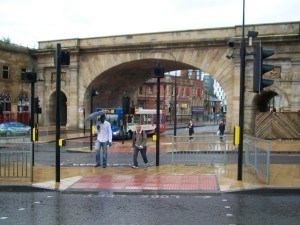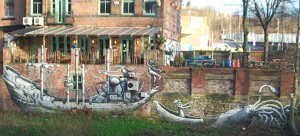Spiritual Awareness
I can remember Alistair Hardy’s book, “The Biology of God”, published in 1966. I must have read it in the early seventies and I read it because it had the word Biology in the title. If memory serves it relates stories of spiritual awareness and argues that spirituality is biologically determined. This does not imply the truth of any particular tradition, just that there are biological reasons why we have such experiences.
Awareness
David Hay mentions Hardy in his paper “The Spirituality of Adults in Britain – Recent Research” , one of the references in Gordon Ferguson’s recent comment on my post Spiritual Assets. Gordon writes:
Spirituality is not just about ‘paying attention’ or awareness, but about the response to what the attention reveals – spirituality is relational. David Hay called spirituality ‘relational consciousness’ … and contrasts it with individualism. The individual stops with just the attention and then leaps straight to the political.
In my reply I suggested paying attention, or awareness, is an essential precursor to caring or love or empathy. I’ve given this more thought and wish to shift my ground somewhat.
Awareness is a single act, not the first step in a chain of activities that results in caring. Gordon refers to a Wikipedia entry about the Ethics of Care. This mentions Tronto’s four ethical elements of care: attentiveness, responsibility, competence and responsiveness. I don’t think this is a sequence, they are four elements that need to be in place for care to happen. The problem with such lists, apart from the polysyllabic psychobabble, is they break down what is essentially a single act.
Caring or Loving?
Gordon argues:
The response that spirituality brings is one of ‘care’. … I think ‘care’ is better than ‘love’ since the word ‘love’ has been far to abused and misused. ‘Care’ is also the term used by feminists – it is men that leap straight to the political – women, routed in caring community, are more sensible.
So, the argument seems to be paying attention brings something to mind and then the observer makes a choice to take a political or a caring route. Gordon implies caring can be followed by politics but politics alone does not hack it.
The inadequacies of the English word love have often been highlighted. New Testament Greek has three words for love. Translating all these using one word makes nonsense of some passages. I’m not sure any of the three readily translates as caring but there you go. I would not use caring to describe this response or outcome of awareness.
Obedience
The word I would use to describe the response to awareness is obedience. There is another issue with translation here. The word obedience has a Latin root that means to listen. The opposite of obedience is not disobedience but it is to act inappropriately as a result of not paying attention. Obedience is not about doing as you are told but it is to respond appropriately to the situation, which might include someone barking orders at you.
Awareness demands obedience. When I walk past someone begging in the street, I see them and avoid them. If I was truly aware of their humanity I would do something for them. So, paying attention or awareness is not passive, it demands obedience and that obedience is at the same time caring and political.
Christians would argue you can see this radical obedience in the stories of Jesus. We see it too in the painstaking experimental approach of the scientist and where those who see something is wrong set out to fix it. Sometimes circumstances force awareness onto someone, who might lose a loved one and fight to make sure the cause of their loss does not endanger others.
Mutual Affection?
One special case is those who notice how our landscapes slowly change over the decades. The elderly may reminisce, indulge in nostalgia but I suspect many wrestle with working out how the world has changed. We do not see how money leaves the local economy because many of us do not remember a time when it was different. This motivates those who do see it and there are many ways to the same conclusion, to seek ways to change the status quo and find ways to retain money locally.
Is this the same as Hay’s “relational consciousness”? Well holy obedience is certainly relational, it is a life lived for the good of community, nurturing the relationships that build community. But as Hay puts it:
Spirituality demands more than functionality and organisation, it can only flourish in an atmosphere of mutual affection.

